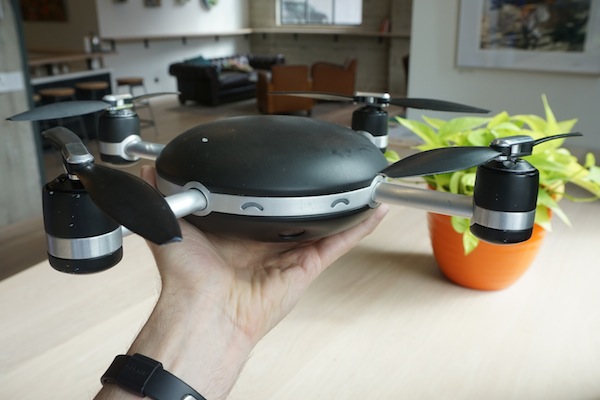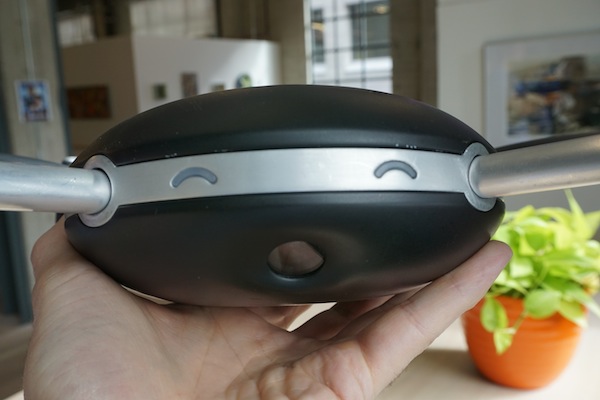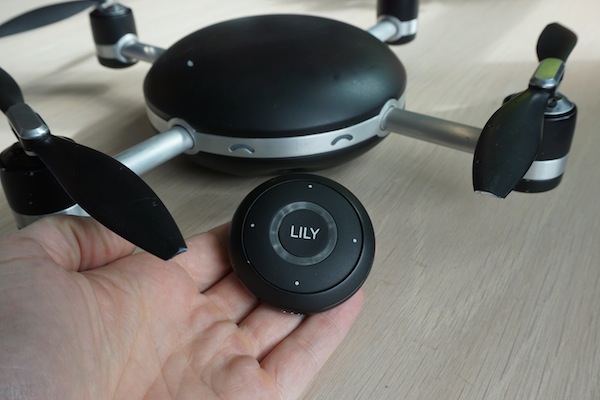Lily Drone Is a Flying Action Camera That Follows You
Forget selfie sticks. The Lily personal drone uses GPS and computer vision to follow and film your biking, skiing, surfing or other exploits.

Selfies are a fact of life, action cameras are going mainstream, and personal drones aren't far behind. A new gizmo called Lily integrates all three phenomena: It's a 2.8-pound drone that uses GPS, computer vision and a tracking device to follow you and film your exploits, from mountain biking and skiing to just walking around.
All you have to do is throw Lily in the air — literally throw it — and the drone figures out who you are, what you are doing and how best to film it for up to 20 minutes of flight time.
The compact quadcopter debuted today on the company's website at a preorder price of $499, with the first deliveries slated for February 2016, after which prices jump to $999. As the technology gets better, the drones could get much cheaper and even smaller — down to pocket size — Lily's creators Henry Bradlow and Antoine Balaresque told me.
MORE: Best Drones on the Market
They dropped by Tom's Guide's San Francisco office about two weeks ago with a prototype (made in part from 3D-printed components) to demonstrate their device in action, but they almost weren't able to. We started at the Yerba Buena Gardens near the city's convention center, but moments after we exposed Lily's propellers to the light of day, a security guard rushed over, telling us that drones are not allowed in the park.
"It's not a drone. It's a flying camera," said Balaresque. The distinction was lost on the guard, but it's an important one for Lily's creators.

Cameras typically hang below drones, usually as an optional add-on. But Lily's 12-megapixel/1080p camera is built in, which enables features such as full waterproofing. Not only can you toss Lily in a river, but it will also rise up out of the river and take to the air, at least according to the company's new promotional video.
Get instant access to breaking news, the hottest reviews, great deals and helpful tips.
It's also a more-durable design. "The internal camera is suspended on a dampened system," Bradlow told me. "So in the event of landing on a hard surface, all the impact gets absorbed on the outside and never hits the glass lens."
But beyond that, the camera is the pilot. Lily uses several technologies to track its master, including GPS and a small wireless tracker the owner carries in a pocket or wears in a waterproof wrist strap, making it look like a gargantuan fitness tracker.
But Lily's real innovation — if it works — is a set of computer-vision algorithms developed by Bradlow, who had been programming robots before he and Balaresque teamed up on the drone. After it's tossed in the air, Lily spends about 30 to 60 seconds studying you, Bradlow told me, to memorize what you look like.
Afterward, Lily literally watches you in order to keep up, using GPS only as a backup if the computer-vision system fails. "If you had an identical twin … and they ran in front of you," said Bradlow, "Lily might get confused for two to three seconds, but as soon as you went in the other direction with the tracking device, it would know that it had made a mistake."

The tracking puck includes not only a GPS receiver but also a barometer and accelerometer. That allows Lily, for example, to register if you get airborne while snowboarding, which tells Lily to capture a burst of photos of your awesome actions. The tracker also features a microphone, so the audio on the movies is of you, not the whirr of the rotors overhead — or of nothing at all, as most drones tend to shoot silent movies. The puck features buttons that allow you to bring Lily in closer or farther or trigger Lily to automatically fly in a circle around you. "You wouldn't be able to get that manually with an RC drone," said Balaraesque.
All that is how Lily is meant to work, at least. Lily was rather more primitive when I saw it. After getting kicked out of Yerba Buena Gardens, we made our way over to Sue Bierman Park near the San Francisco Ferry Building, where there's less oversight. Balaresque didn't want to risk tossing Lily in the air, so it instead took off from his hand.
Lily took a lot longer than 60 seconds to get its bearings, and it was slow to follow, which it did from several dozen feet away, not the 6 feet or less that the final version should be able to do. The Lily team hasn't miniaturized the electronics for the tracking device yet, so Balaresque instead carried a big black box that contained the circuit boards. On top of that, they hadn't optimized the Wi-Fi communication system between Lily and the tracker, so the drone often got "confused" as Bradlow put it, by the wash of signals from neighboring Wi-Fi networks.
Still, Lily took to the air quickly, hovered steadily and flew smoothly on its own. At one point (at the end of the video above), it started heading towards me — before Bradlow cut the power and Lilly fell harmlessly in the grass. Safety has to be a selling point of this drone, since it flies itself. Lily is programmed to fly no lower than 3 meters (about 10 feet) above the ground. "We'll never hit somebody's head," said Bradlow, "since we're always above the head level." And it typically flies higher, said Balaresque.
Lily does not have a collision-avoidance system yet, however. So the company recommends that people fly it in open spaces only. "We would love the user to go through a dense forest, because you could get some awesome shots," said Bradlow, "but the technology is just not there yet."
Though it could be soon. "We're working with a research group at UC Berkeley … on this exact problem," Bradlow told me. "So hopefully in the next two to three years, this will become possible."
Follow senior editor Sean Captain from the air or ground @seancaptain. Follow us @tomsguide and on Facebook.
Sean Captain is a freelance technology and science writer, editor and photographer. At Tom's Guide, he has reviewed cameras, including most of Sony's Alpha A6000-series mirrorless cameras, as well as other photography-related content. He has also written for Fast Company, The New York Times, The Wall Street Journal, and Wired.
